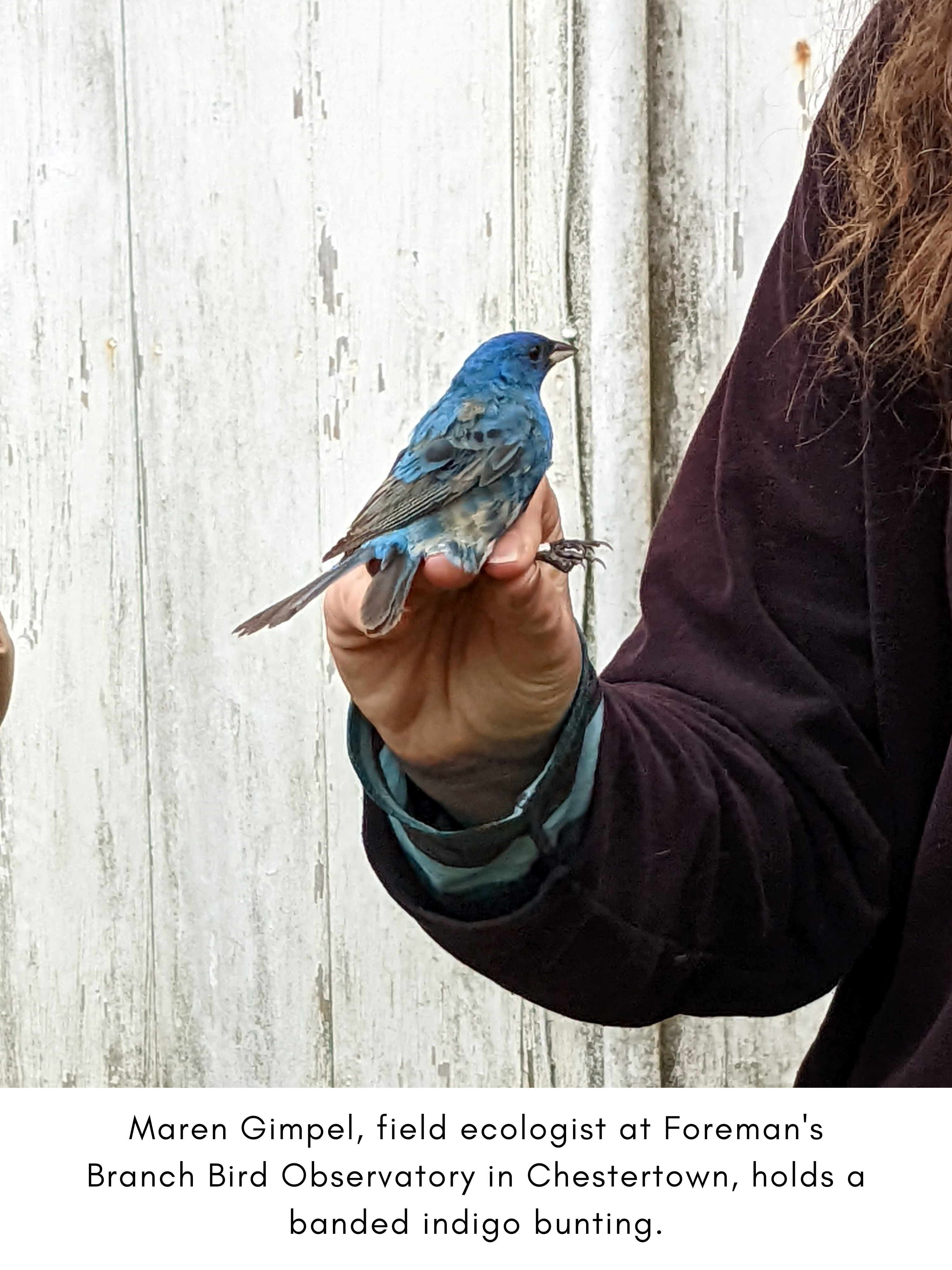Spring Migration

Spring is now in full bloom and along with the welcome sight of flowers comes the even more welcome sound of birds singing in trees all across the Shore. The annual migration of birds traveling from wintering grounds in the south to breeding grounds in the north is well underway, with many iconic migrants (especially the warblers) likely to find a summer home before the end of May. Along with the sounds come the beautiful colors of male birds, finally in full nuptial plumage, who are ready to show off for all the female birds looking for the perfect father for their offspring. This annual song and dance, played out over a few months each spring, is certainly one of nature’s greatest marvels.
In honor of the spring migration, I wanted to take a moment to reflect on some great birds you have to see and where you might find them this spring:
Cedar Waxwing – My personal favorite bird—which is likely already lingering around many parks in the area—gets its name from the wax-like buildup on the tips of its wings, caused by a diet high in red berries. They are often found flying around in small flocks and if you join ESLC for LandJam at Wye Island NRMA on the 29th, you may be fortunate enough to see some.
Indigo Bunting – Another great species that will linger throughout the summer, indigo buntings are often found in small stands of trees along farm fields. These blue beauties look like small jewels in their nuptial plumage. I grew up with these little guys around the family farm. Those seeking them out might visit Sassafras NRMA, where they are easy to spot while standing in the main parking lot.
Tree Swallow – These little aerial aces are fun to watch during the spring and summer as they compete with eastern bluebirds for nest Up close, the beautiful green-blue sheen of their backs in contrast with their white bellies is quite striking. Also, they are insectivores, meaning they spend most of their time scooping up mosquitoes and other flying insects (thank you bird friends!). Any parks with nest boxes, such as Chesapeake Bay Environmental Center or Pickering Creek Audubon Center are good places to scope out some tree swallows throughout the spring and summer.
Summer Tanager – Both this species and its cousin, the scarlet tanager, are visitors to Maryland in the spring and summer months. Their ruby hues, not commonly seen around Maryland (except for northern cardinals), are striking in the woodlands around the Shore. Bright coloration belies the elusive nature of this species, but they can occasionally be seen hanging around the Blackwater NWR Welcome Center.
Baltimore Oriole – The iconic state bird of Maryland and mascot to Baltimore’s beloved baseball team, orioles are more common in the northern parts of the Eastern Shore. You can try Eastern Neck NWR, but for those willing to travel a bit farther, Cromwell Valley Park in Baltimore County is often loaded with them in the mid-to-late spring. Don’t get the males confused with their lesser-known cousins, orchard orioles, who are more of a reddish orange instead of a bright orange!
Good luck birding and make sure you check these visitors off your list this Spring!
This story was written by ESLC’s Director of Land Conservation, David Satterfield.






